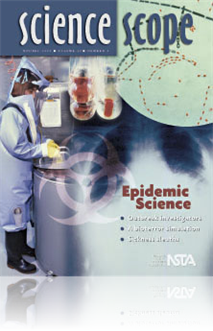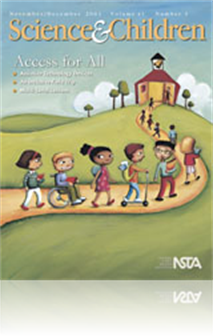All Resources
Journal Article
Teach students about microbes, with an emphasis on those that cause sickness, and introduce them to careers in epidermiology with the simulated outbreak....
Journal Article
Discovering evolution through molecular evidence. Evolution is considered by virtually all biologists to be the central unifying principle of biology, yet its fundamental concepts are not widely understood or widely disseminated. The purpose of this ...
Journal Article
Build Your Own Wright Brothers' Glider
To celebrate the centennial of the Wright brothers’ historic flight, this model airplane activity was developed as part of an inquiry unit on flight. Make your own inexpensive glider and work through the problems the Wright brothers faced in learni...
Journal Article
Outdoor Adventures: Tracking Eastern Box Turtles
This project engages students in an authentic task involving an endangered species, the eastern box turtle. It emphasizes learning by doing science and promotes character growth, teamwork, reflection, and scientific literacy. ...
Journal Article
Insects can be useful for investigations because they are numerous, relatively easy to find, and fascinating to students. Most elementary students have limited understandings of what exactly becomes of insects during the winter, often guessing that i...
Journal Article
The Hoonton PARKnership is a cooperative learning program that pairs a public elementary school and a state park to involve students of all abilities in exciting, interactive outdoor learning adventures. In the program, students learn about their loc...
Journal Article
Editor's Corner: "Turn On" the Evolution Light Bulb
The Science Teacher’s editor shares thoughts on the current issue about teaching evolution effectively....
Journal Article
The movement toward inclusion has affected classrooms greatly. Now, more than ever, teachers are addressing a broader range of academic needs in every classroom. But, how can teachers can reach all students when students are so academically diverse...
Journal Article
Editor's Note: November/December 2003
Is this a familiar scenario in your classroom? As you start your science lesson, a few kids start putting papers away, in anticipation of leaving. The special education resource teacher appears at the door and collects the kids with Individual Educat...





